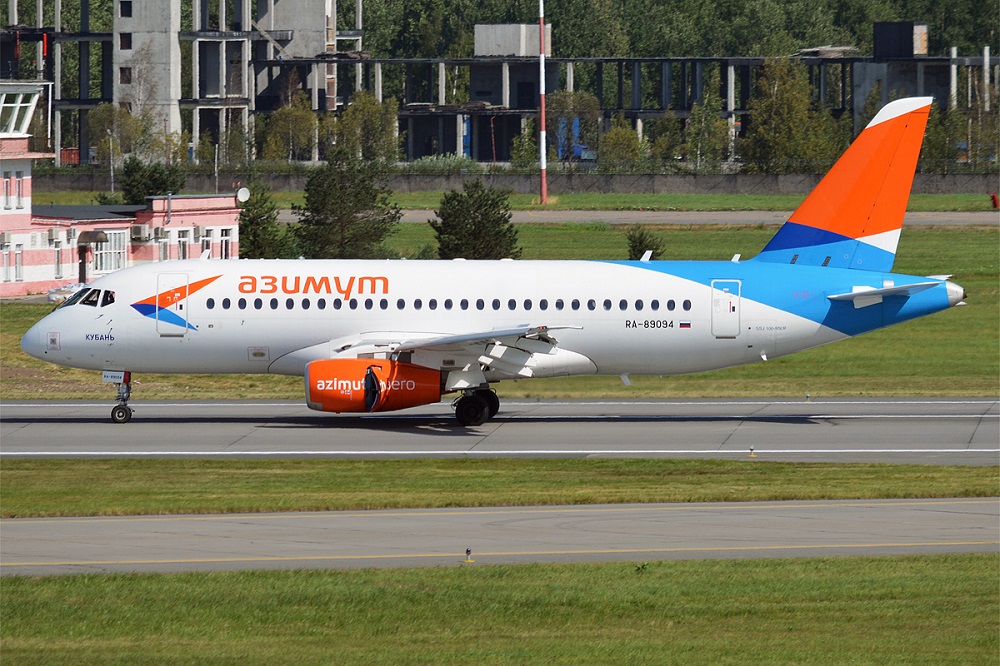Aviation
Airbus delivers its first A350-1000 to launch customer Qatar Airways

Toulouse, 20th February 2018 – Airbus has delivered the world’s first A350-1000 widebody airliner to launch customer Qatar Airways at a delivery event in Toulouse, France. The aircraft is the first of 37 A350-1000s ordered by the carrier and is the first ever Airbus aircraft fitted with the revolutionary new Qsuite seats, offering the first ever double bed in Business class. Qatar Airways is the world’s largest A350 XWB family customer with 76 aircraft on order and the largest A350-1000 customer.
The A350-1000 fits seamlessly alongside Qatar Airways’ growing fleet, including 20 A350-900s today. Both aircraft are complementary and provide for maximum commonality with unmatched operating efficiencies and the same unique passenger experience in their Airspace cabin. Flyers will benefit from absolute well-being in the cabin, with more personal space, optimised cabin altitude, more fresh air, controlled temperature & humidity, integrated connectivity and the latest generation of in-flight entertainment system.
Chris Cholerton, Rolls-Royce President – Civil Aerospace, stated “We are very proud to have worked with Qatar Airways and Airbus to deliver engines for this latest version of the A350 XWB family. This delivery marks another significant day in our partnership with the airline and the manufacturer as the new aircraft is powered by the most powerful engine ever developed for an Airbus aircraft, the Trent XWB-97.”
The A350-1000 is Airbus’ latest and largest widebody in the twin-aisle category. With a 7-metre longer fuselage, the A350-1000 space for premium cabin products is 40% larger than its smaller sibling the A350-900. In Qatar Airways configuration the A350-1000 offers 44 additional seats. It is a truly long-range aircraft with a range of 8,000nm (14,800 km) at entry into service. The A350-1000 features a modified wing trailing-edge, new six-wheel main landing gears and more powerful Rolls-Royce Trent XWB-97 engines. As with the A350-900, the A350-1000 brings together the very latest in aerodynamics, design and advanced technologies for a 25 per cent step change in operating cost compared to previous generation competitor aircraft.

Aviation
Flames on the Runway: Russian Jet Sparks Emergency in Turkey

A dramatic incident unfolded at Turkey’s Antalya Airport on Sunday night when a Russian passenger plane caught fire shortly after landing.
The Azimuth Airlines Sukhoi Superjet 100, arriving from Sochi International Airport in Russia, was carrying 89 passengers and six crew members. Thankfully, all onboard were safely evacuated without any injuries reported.
Air India to Launch aircraft maintenance training institute in Bengaluru
The fire broke out after the aircraft landed at 9:34 p.m. local time, prompting the pilot to issue an emergency call. Evacuation footage shared by Russian media site ЧП Сочи captured the tense moments as passengers slid down emergency slides, with some seen carrying large pieces of luggage despite the urgency of the situation.
Investigators at the time highlighted the critical impact of passengers retrieving their belongings, which obstructed others from escaping the burning aircraft.
This country tops visa rejections in the popular Schengen countries
Although no injuries were reported this time, the episode serves as a stark reminder of the importance of prioritizing life over possessions during emergencies. Seconds can mean the difference between survival and tragedy in such situations.
In response to the incident, Turkey’s transportation ministry confirmed that efforts were underway to remove the damaged aircraft from the runway. While arrivals at Antalya Airport were temporarily suspended, departures continued from a nearby military-operated runway to minimize disruptions.
The cause of the fire is yet to be determined, but the swift evacuation ensured a safe outcome for everyone on board.
-

 Aviation2 months ago
Aviation2 months agoMicrosoft Flight Simulator Raises $3 Million to Bring Back the An-225 Mriya
-

 Airlines2 months ago
Airlines2 months agoQatar Citizens Can Travel to the United States Without a Visa
-

 Aviation2 months ago
Aviation2 months agoQatar Airways bans these new Electronic Devices on plane
-

 Airlines2 months ago
Airlines2 months agoJapan Airlines Rolls Out Free Domestic Flights to International Passengers
-

 Defence2 months ago
Defence2 months agoWhich Country Has the Largest Fleet of Fighter Aircraft?
-

 Travel2 months ago
Travel2 months agoQatar Airways Launches Four Additional Flights from Amsterdam
-

 Airport2 months ago
Airport2 months agoWestern Sydney Airport Welcomes Its First Plane After 6 Years of construction
-

 Airlines4 days ago
Airlines4 days agoDAMAC Air: Dubai’s New Luxury Airline Offers Free Flights for Registration








